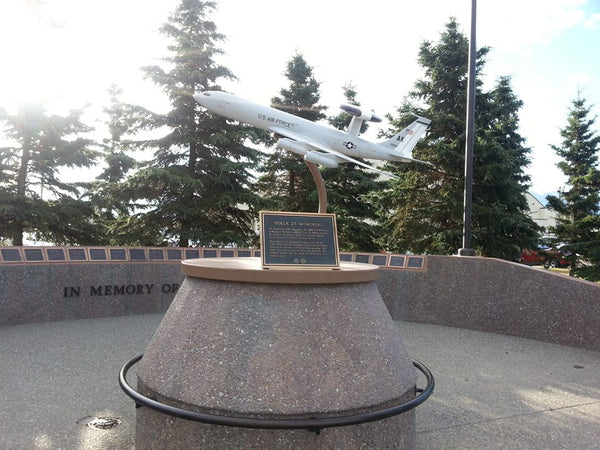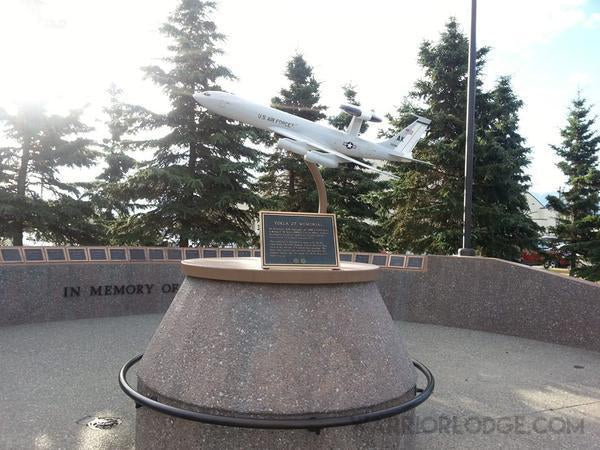 Words by Mike Weisbecker.
Words by Mike Weisbecker.
22 September 1995, a Friday, started off as the last duty day of the week for myself and other members of the 962nd Airborne Air Control Squadron, Elmendorf AFB, AK. We had one flyer for the day. E-3B Sentry, tail number 77-0354. Flight deck callsign would be Yukla 27. It was scheduled to be one of the last sorties for the fiscal year. The usual dance in trying to zero out the flying hours budgeted for the year.
This particular sortie was a training sortie for the aircrew so some duty positions on the aircraft had instructors or evaluators on board to provide check rides for some of the crew members.

Nothing out of the ordinary at crew show thru to engine start other than the midshift maintainers were relieved by the dayshift crew. Nothing we hadn’t done hundreds of times before when the launch would bracket two shifts.
24 aircrew on the aircraft. 22 Americans and 2 Canadians. As we had a NORAD commitment we had a detachment of Royal Canadian Air Force aircrew members in the squadron.
Another unique feature of our unit was the operators (aircrew) and the maintainers being in the same building as well as the maintainers being under the command of the flyers. It was one of the most unique experiences in my career. It allowed the airborne technicians to come out during maintenance at their discretion to see how we repaired what failed on them during a flight. It also helped us wrenchturners build a much better rapport with those we loaned our aircraft to.
After engine start the aircraft was marshalled off its hardstand and turned right to head down to the west end of the main runway to receive its end of runway inspection from the unit’s Supervisor of Flying.
Maintainers waited back on the hardstand usually until the aircraft was airborne before heading back to the hangar, in case the aircraft had maintenance issues. Sometimes there was a delay in takeoff due to air traffic controllers.
354 started its takeoff roll, just like it had hundreds of times before.
This was the last time it would do so.
At some point during the roll it struck an estimated 30-20 Canadian geese. A Canadian goose is roughly 12-14 pounds and is akin to a rugby ball in shape. The strike occurred on the left wing and engines, causing both the engines on that wing to fail. Right at the moment an aircraft needs as much lift as possible to get and maintain flight.

The aircrew declared an emergency to the tower. The aircraft banked left. It then fell wing first into the ground off the other end of the runway and exploded.
What had started off as just another day in a flying squadron had turned into something else.
24 men. Enlisted and Officer. American and Canadian. Sons, brothers, some were husbands and fathers. All knew the inherent risks involved with flying. With being a military aviator.
It’s been 19 years since this happened. Everyone who was left behind has moved on with their lives. It’s what you need to do. Their children have grown and now some have children of their own. Some spouses have remarried. Some of their parents have probably passed on and, I like to think, happily reunited with their sons somewhere.
For those of us in the squadron, we mourned our fallen squadron mates. Some may have been just acquaintances, other close friends. All are missed.
The way the base and city came together for us was something I always will remember fondly. The chaplains from the Anchorage Fire and Police Departments were at the squadron area very soon after the crash.

And then when the family members began to assemble to receive the official news on their loved ones I made my way out. One of the starkest memories I have is seeing the vehicles of the crewmembers in the parking lot.
If you make it to Elmendorf, you can see a memorial to the crew of Yukla 27. It is a low semicircle with 24 plinths, each with a bronze plaque with a crew members name on it. At the center is a stand with a model of the aircraft donated by Boeing, the aircraft manufacturer. The memorial is next to a cage with eagles that have been injured and not able to be released back to the wild. Very appropriate as the fleet of E-3’s is referred to as the Eyes of the Eagle and the word Yukla is an Athabaskan word for eagle.
Not a day has gone by where I have not thought of this and the people that we lost. Some memories are as sharp as the day it happened, others hazed with the fog of time. I know many of my squadron mates experience the same. Life goes on but we carry the scab that covers a wound that will never truly heal for us.



Leave a comment
This site is protected by hCaptcha and the hCaptcha Privacy Policy and Terms of Service apply.